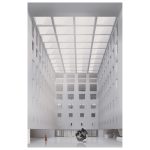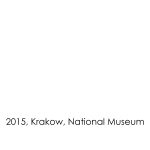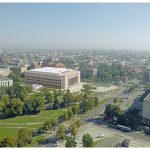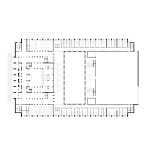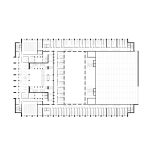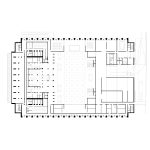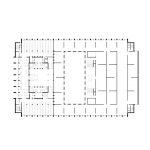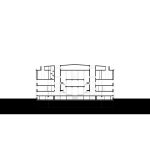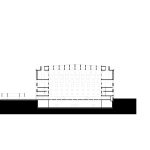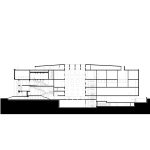3rd Prize in the competition for the NMK (National Museum Krakow)
NMK (National Museum Krakow)
location: Krakow
project: competition entry, 3rd Prize, 2015
architect:
hs99
project team:
katarzyna bartel, oliwia stachowska, adam kulesza, konrad garbowski, wojciech slupczynski, arkadiusz laskowski, ewelina przeworska, tomasz czolowski,
model:
tomasz kudelski
status:
competition entry
Building Footprint: 6123,8 m2
Net Floor Area: 27856,6 m2
Gross Floor Area: 34163,2 m2
Volume: 182503,3 m3
“The National Museum in Krakow was established by a resolution of the Krakow City Council on 7 October 1879, as the first national museum institution at a time when the Polish people were deprived of their own statehood and country, which had been appropriated by the partitioning powers. Until the end of World War I it was the only such large museum accessible to the public in the Polish lands, and to this day remains the institution with the largest numbers of collections, buildings and permanent exhibitions.
The collection of the National Museum in Krakow was begun with Nero’s Torches, Henryk Siemiradzki’s painting presented to the city of Krakow by the artist himself on 5 October 1879 with the intention of creating a gallery of national art in the Sukiennice (Cloth Hall). The following day (6 October 1879), 39 artists attending the celebration of Józef Ignacy Kraszewski’s 50 years of work as an author gathered in Konrad Wentzel’s townhouse at the Main Market Square and promised donations of their works to form the initial collection of the newly formed museum. The artists’ example was soon emulated by private individuals, who began to send donations to the museum in the Sukiennice. From the outset, the museum gathered works by contemporary and historic Polish artists from wherever they had lived and worked.
The items collected included national mementoes and objects connected with individuals recognized for their services to the country, or otherwise relevant to national history and culture, including art prints, manuscripts, old prints, numismatics, decorative art objects, and militaria. As far as possible, examples of foreign art, including Far Eastern art, were collected as well. Already by the first years of the twentieth century, the museum had run out of space to store and display its collections (which had by then grown to over 100,000 items). The management of the museum initiated efforts to obtain one of the buildings on Wawel Hill, but this came to nothing; the situation changed when Poland regained her independence. Soon plans began to be made to build a new home for the museum, called the New Museum Building. In 1934 the construction of the New Building began, based on a design hailed as one of the most modern museum projects in Europe. Regrettably, the outbreak of World War II prevented its completion, and the building was used in its unfinished form till 1970. Its extension was resumed the following year but was not completed until 1990. “
more at: www.mnk.pl
